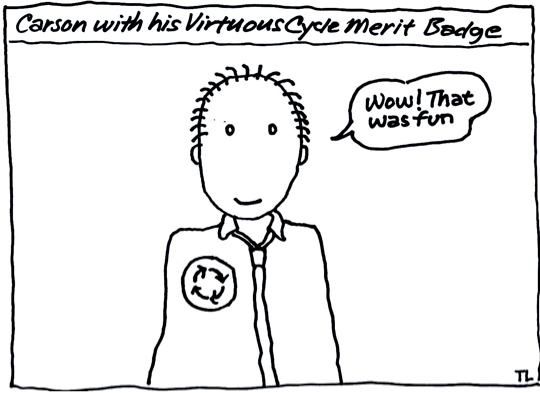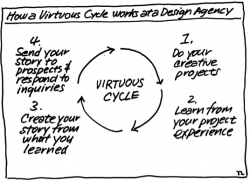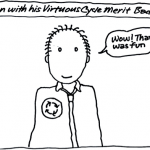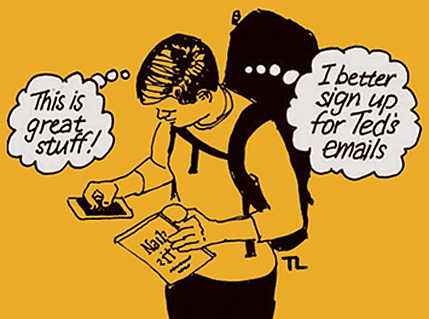Negotiations not Required

It was a beautiful morning. I’d just finished my morning round of client calls when he called with the news. It was one of those calls that I live for.
I’ve worked with Carson for several years. He has a small design firm focused exclusively on wine and spirits. He’d just won a rebranding assignment that was twice the size and twice the fee of any previous engagement. And he jokingly said he wanted his merit badge, signifying that he’d successfully passed the “virtuous cycle test.”
Carson started his career with an in-house creative group at one of the mega wine holding companies. It was a great start because he got to live the inside story of how professional marketers build brands. Carson spent most of this time designing promotions and brand extensions. So not only did he see how brands are born, he also saw how they are positioned and maintained.
The downside was that the marketers were in charge and Carson began to realize that the marketing process had become formulaic. Worse, the designers’ input was not very welcome. But he did learn how the power of positioning and believable backstories built brands — important insights for his future.
Carson took those insights when he left to start his own design practice. For several years, he successfully continued to design and create promotions for the wine company. He called me for help moving from promotion design to brand design and packaging. Our early discussions were about improving his client management, presentation, pricing, and negotiation skills. I recognized immediately that, in addition to his design skill, his sense of brand story was exceptional. His native comfort with the power of narrative had the potential to drive new business. The kind of business he wanted: brand creation and re-creation.

Virtuous Cycle: First Half
I remember Carson and I sitting at his conference table, with a lovely city view, planning a series of articles that would build on insights from his industry experience. His history with promotions represented the all-important first half of the virtuous cycle. I said, “Carson not only is your design work among the best, your insights into the power of story to build brand are exceptional. You naturally go to the ‘why’ behind the brand to bring forward its appeal. Your storytelling skills will be the base for your out-bound messaging.”
At this point he was comfortable asking for larger fees. And he was much better at behaving like the expert with clients. He’d experienced a taste of what it feels like to successfully drive the professional relationship and learned that clients expected him to be in charge.
Carson understood the concept of the virtuous cycle from the start, at least in the abstract; but understanding something intellectually doesn’t mean you can put it into practice. So we planned a series of messages based on what he’d accomplished for clients, including case studies and insight pieces. He sent them to industry publications, former clients, current clients, and marketers he’d met in the wine and spirits industry.
The outbound messages:
- positioned Carson’s firm as an expert in positioning wine and spirits.
- used the insights Carson had gained in his work.
- were sent to marketing decision makers and industry media.
The result: a series of pre-qualified inbound calls. One caller was a marketing executive with a wine holding company that needed a brand revitalized, including packaging. With the presentation date set Carson studied the brand, held phone calls with the client team, and developed a plan, including: deliverables, schedule, and costs. This plan was Carson’s ideal way to make this brand successful, exactly what the client would expect from an expert.
Closing the deal was classic. On the presentation day Carson drove out to the client knowing that his approach was right. He was confident in his skills, knowledge and expertise.
He presented his work, talked about the power of narrative, and showed examples of how story telling had built global brands. At the end of his talk, the senior vice president asked, “How would you go about revitalizing our brand?” Carson replied with a description of the deliverables and said: “In my experience, an engagement like this will take XX weeks and the fee will be $XXX,XXX.”
The client responded, “That’s what we thought. When can we start?” Carson said, “I’ll email you a contract and when I get it back with a check, for half the fee, we’ll get started.”
They shook hands, and Carson received payment — prompting his call.
The best negotiation is no negotiation at all. Used right, that’s what a virtuous cycle is designed to do. Carson’s first virtuous cycle is complete.
This article originally appeared on HOW Design.


